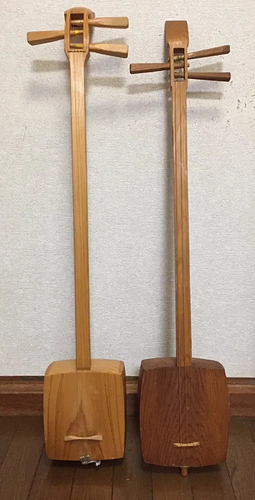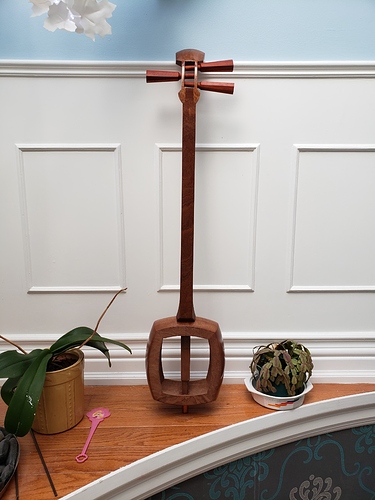I am a new member that is interested in constructing a shamisen . I have built a few ukuleles and wish to attempt making a shamisen .
I just ordered the Abbott book so I would some starting reference as a guide.
One question is about the skin, having read a few articles on the internet and binge watched numerous youtube videos , for my first build I thought of using a thin wood panel for the body instead of skin. I had read that in Okinawa , wood was used instead of skin on some versions of the the instrument.
How thin and how does this type of skin sound as opposed to using goat skin or faux skin substitutes?
I noticed at least one person on this site who was contemplating using ballistic nylon.
My ultimate plan is to eventually complete building a traditional animal skinned instrument , but want to get the basic mechanics down before going full throttle .
Thanks
Woodfanatic


 . It’s Really important to get it tight! There were other flaws with it so I decided to start another shamisen pretty much right after I finished it
. It’s Really important to get it tight! There were other flaws with it so I decided to start another shamisen pretty much right after I finished it
